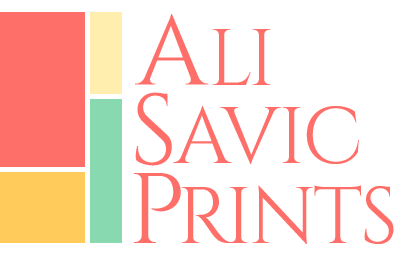My husband, Dragan, who is a native Serb, our 11 year old son, Aleks and I have embarked on an adventure, by moving to Belgrade from England for 8 months. These are excerpts from my diary.
Spring flowers in Belgrade's Botanical Garden
Celebrating Two Easters
Spring has definitely sprung in Serbia. It's difficult to imagine that only a few weeks ago we were skiing on Kopaonik Mountain. There was also plenty of snow and ice this winter in Belgrade too.
This week the temperature rose to 27 degrees C in Belgrade. I believe that's hot for many Brits, but some Serbs were still wearing coats and jumpers! Having spent a week in England for western Easter, we came back to a green and balmy Belgrade. It was Orthodox Easter when we returned and our Kuma (Serbian Godmother) had kindly made some beautiful painted hard boiled eggs for us. The first egg to be dyed is known as čuvarkuća (the keeper of the house) and we have set ours aside to be kept as a kind of amulet for the whole year. (in the fridge!) [1]
Eggs dyed with red onion skins, red cabbage (blue colour) and regular onion skins (brown)
How to dye Serbian Easter Eggs
To dye the eggs, boil them in a saucepan filled with water, red onion skins and a little vinegar. After about 15 minutes turn off the heat and leave them in the water for a few hours. The eggs will become a deep maroon in colour. Skins from about three onions will be enough to dye at least 10 eggs. The eggs are dyed on 'Veliki Petak' (Good Friday) and then cracked and eaten on Easter Sunday.
The eggs can also be dyed using plants as a resist which create beautiful shapes and patterns. To do this, take an egg, place a rosemary sprig on the egg and wrap it tightly in old stocking fabric. To keep the rosemary close to the egg, use string to bind the stocking at each end of the egg. The wrapped eggs can then be boiled in the natural dyes, red onion skin (maroon), red cabbage (blue) or regular onion skin (brown). Remove the eggs from the water. When cool, wipe a small amount of vegetable oil on the shells to give them a sheen.
On Easter Sunday, there is a cute game to play with painted eggs. Cup your chosen egg in your hand and let your opponent tap your egg with hers. Then swap and tap your egg on theirs. The winner is the person who's eggshell remains intact! They taste good too!
Check out Pinterest for a host of ideas for dying and painting Easter Eggs.
Vrdnik Thermal Spring in Springtime!
Our last trip to Vrdnik [2], a thermal spa town in the gentle hills of Fruska Gora, was in the dead of winter. We swam in the thermal spring water in the 'Termal Hotel', as snow was falling outside. So, another trip to Vrdnik in Springtime was a must. Our friends from England were spending a week with us and we all piled into a 7-seater and stayed the night in Vrdnik. The kids loved the pool and we all enjoyed the beautiful wild flowers and blossom.
An Orchard in Vrdnik
Distilling Brandy in Vrdnik
On our way to visit Vrdnik's Monastery, we were surprised to see a family distilling quince brandy in their garden! It is perfectly legal to distil your own liquor in Serbia and this family was making brandy for their restaurant which is called 'Vila Green Day' [3]. Dragan asked if we could take a few photos and they kindly agreed.
Home-distilled Quince Brandy
Vdrnik Monastery with beautiful Easter flowers and dyed eggs as a centre piece, below the arch.
Pobusani Ponedeljak (Grave Tending Monday)
When Dragan and Aleks were at work and school, I decided to take a walk in the local woods. Spring flowers were emerging on the forest floor and a black squirrel scampered up a tree trunk. I was lucky to see a cuckoo swoop from tree to tree and unfortunately got bitten by a very large mosquito!
On the way back I walked through Novo Groblje (yes, the cemetery again!) and I guessed that it was a special day, because the flower sellers were out in force. I wondered if it was 'The Day of Dead Souls' and decided to visit one of our relative's grave. Many people were placing flowers and candles on their loved one's final resting place and I noticed several people gently cracking a painted egg on the marble and laying it on the grave.
I asked my Kuma (my Serbian Godmother), Daniela about this ritual and she explained that it was 'Pobusani Ponedeljak', the second Monday after Easter Sunday. Extra eggs are dyed/painted after Easter, especially to be placed on the graves. It was tragi-comic to see that some eggs had rolled off and had been nibbled by the crows who roost in the cemetery.
Belgrade's Botanical Garden
On my way back from my Serbian lesson I stopped at Belgrade's Botanical Garden [4]. It is a delightful haven near the city centre and boasts a beautiful hot-house with tropical plants including, huge banana trees and fascinating cacti. The Japanese Garden is the pearl of this charming but relatively small hideaway. I would definitely recommend a visit.
The Japanese Garden in Belgrade
Coffee Drinking in Belgrade
To finish, I think a new Serbian phrase is needed. This is the phrase I hear everyday from friends, relatives and people I pass in the street chatting to each other, 'Hoćemo da pijemo kafu?' - meaning, 'shall we have a coffee?' Now that spring has sprung, there is a million places to sit outside and do just that in Belgrade!
Hoćemo da pijemo kafu? - Shall we have a Coffee?








